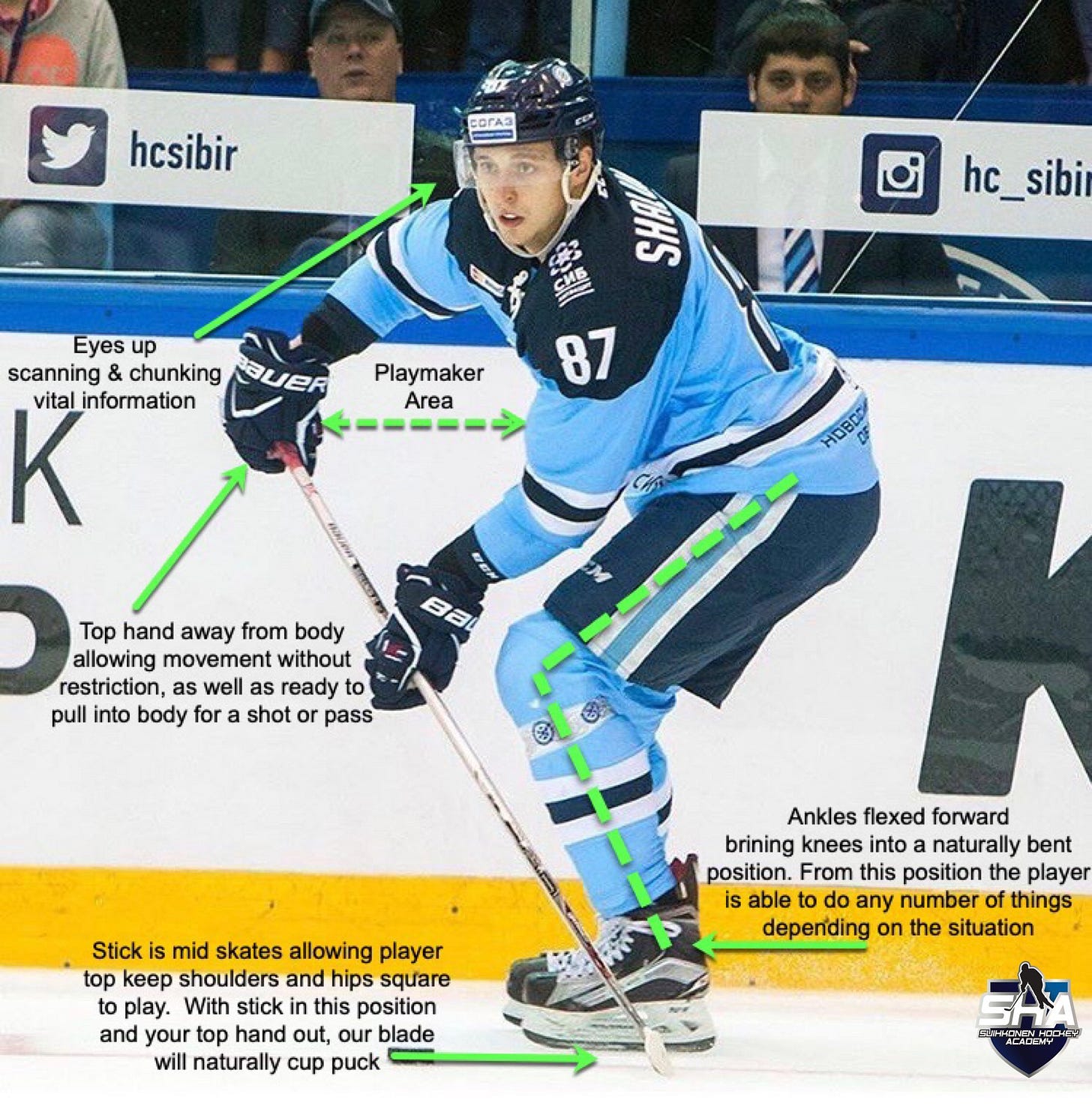Today we are going to dive into the concept of puck positioning. What is it? Why is it important?
Definition
Puck Positioning = Where a player holds the puck while in possession
Another name you’ll potentially hear thrown around is “puck placement.” Where the puck is placed relative to the player’s stance.
The two most common spots are:
Hip Pocket
In Front
Holding It In Your Hip Pocket
Hockey people are great at coming up with slang.
“Hip pocket” simply means that the puck is held at the side of the player in a spot that the puck can immediately be passed. This creates a dual threat where a player can skate, pass, or shoot. It looks like this: (Thanks Ted Suihkonen!)
For coaches and players, the most often desirable puck position is in their hip pocket. Going further down the chain of abstraction, this has led to many in the game wanting players to ‘underhandle’ the puck and keep it in their hip pocket almost all the time.
Underhandling
Underhandling is a term that is used to indicate that players avoid stickhandling. The goal is to minimize time handling the puck so the puck can be passed or shot quicker. Or players simply push the puck around the ice. The soft catch is a great example.
We recently touched on this in a full post, “Shooting: Off the Soft Catch”
Overused Term, Benefits of Stickhandling
In recent years, underhandling has become a goal for many players and coaches. While admirable and the thoughts come from the right place, there are benefits to stickhandling and having the puck in front.
Puck control
Adding deception
Getting players to reach
Here is a great example from the defenseman’s standpoint. Stickhandling in front of his body to create a false angle that allows a simple pull back into his hip pocket and the forechecker is beaten.
Here is a great example from the forward’s standpoint. A little toe drag back then shift around the defender’s stick-on-puck tactic from 15-year old wunderkind Connor Bedard.
Real-Life Example
So clearly there are benefits to different puck positioning. The key is understanding when to use each. Does the situation call for hip-pocket positioning? Is there a tight situation that requires deception?
Where players get into trouble is when they rely heavily on one over the other. It’s common that a player would, for example, constantly hold the puck in front of their body and constantly expose it to the opposition, thus making the player predictable and easy to defend.
I’ve had a player over the past two seasons that has struggled with wobbly passes, on the breakout, and with shot power. All three of these issues stemmed from poor puck positioning. Leaving pucks out in front of his body limits the angles he can make certain plays at and is a limitation on downforce he’s able to generate.
He’s getting better and we use the phrase, “hands in front of puck” to signify where he needs to hold the puck more often. This will give flatter pucks, allow him to hit the passing windows when they appear, and expose the puck less to pressure. For him, it’s the simple window to better passes, fewer turnovers, and a better shot.
Like anything, it’s about finding the appropriate balance. Being comfortable with the puck in front as well as on the hip pocket gives a player more weapons in his or her arsenal.
What are your thoughts on puck positioning? Underhandling vs stickhanding?
Further Reading
Did you enjoy this newsletter?
Help us spread the ideas within and share it with the people you care about






